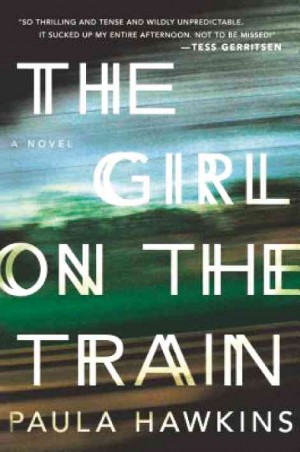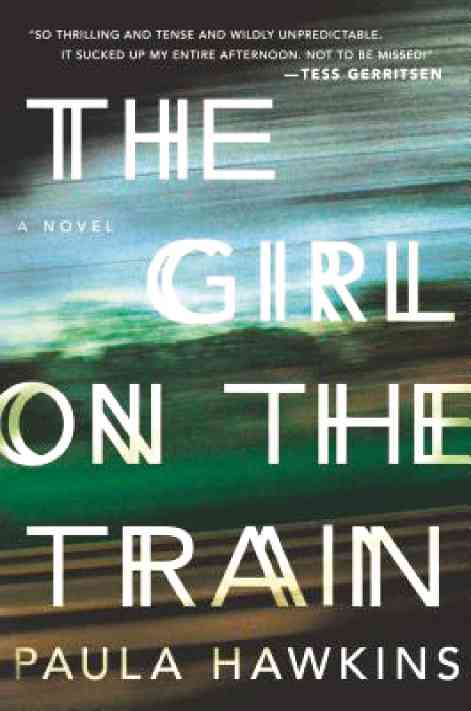Paula Hawkins’ new thriller about bad marriages shares some qualities with Gillian Flynn’s genre-leading novel, but also possesses its own daring set of narrative twists

A controversial and critically acclaimed movie adaptation by David Fincher in 2014 served to highlight the sudden, sharp popularity of chick noir.
Since then, the search has been hot and heavy for the “next ‘Gone Girl,’” as hungry readers look forward to the next bloody, bewitching book. The new book that has invited the most comparisons is clearly “The Girl on the Train” by Paula Hawkins (Riverhead Books, New York, 2015, 323 pages). The comparisons are at once deserved and also off base.
Both books feature piercing, detailed looks at disintegrated marriages, so piercing readers may want to turn away at some point. These two novels shatter the illusion that comes with domesticity and domestic bliss; they warn that marriages can become dangerous right under our noses. Both books are well written, the prose accessible and at times surprisingly wounding. The books move forward relentlessly and with purpose, like someone chasing you with a sharp object.
Most of all the two books utilize perfectly the literary device of the unreliable narrator. But that is where the similarities end. “Gone Girl” turns immediately and completely, right in the middle of the book. “The Girl on the Train” begins turning right after the beginning and keeps on turning, little by little, until close to the end.
“The Girl on the Train” is set in the United Kingdom, where the titular, literal girl on the train, Rachel Watson, takes the train every day to go to London. Rachel has lost her job, her marriage and pretty much what used to be her life because she has become an alcoholic. Every day, she pretends to go to a job she no longer has by taking the train. On the train, she thinks too much and sees too much.
Every day, Rachel looks out from the window whenever the 5:56 train stops near Blenheim Road. She sees the same couple in a house close to where she used to live and imagines very happy lives for them, naming them Jason and Jess. Aside from her made-up distractions, Rachel broods over her fractured relationship with her ex-husband Tom, who now lives in what used to be their home, with a new wife and a child.
Bothered
More than anything else, Rachel is bothered by lost time due to her blackouts. She wakes up in the morning and cannot remember what happened, causing much anxiety and shame. But one day, she wakes up with a bloodied mouth and cuts. That night, the woman she named Jess—her real name is Megan Shipwell—goes missing. Somehow, Rachel feels she knows something and begins to investigate on her own, much to the annoyance of the police and the chagrin of Tom. Did Megan’s husband have anything to do with the disappearance? Is it the handsome therapist Megan had been going to?
Then “The Girl on the Train” shifts into much darker territory, where everyone has a terrible secret and no one is what they seem. Especially Rachel. Never has such a gripping book featured so many unlikable characters. You want so much to cheer for Rachel, but she is indeed her own worst enemy, making wrong choices constantly; but still you will keep reading, keep wanting to find out what happens to her. And see if you can guess what’s really going on.
“Gone Girl” is the better book, more elaborate and scarier. But “The Girl on the Train” is no mere imitation. With a larger cast and multiple domestic disturbances, “The Girl on the Train” features three troubled, unreliable narrators, with Rachel being the most trouble. Its slow-burning, latticework-like plot comes together like a shot to the gut. It’s far more manipulative. And the book’s most obvious divergence from “Gone Girl” is its frighteningly accurate, bracing portrayal of an alcoholic’s desperate roller-coaster life, down to the dark, daily blackouts that play a bigger role than expected. “I have lost
control over everything,” she thinks, “even the places in my head.”
It is then only fitting that the author Hawkins wrote this, her first thriller, after a stint writing romances. What does it say when readers are fascinated by the emergence of trouble from seemingly perfect relationships? Is it cynicism or merely the interest in funhouse-mirror reflections of modern love? Or perhaps, as Paula Hawkins shows in the bad romances of “The Girl on the Train,” everything can turn bad when you least expect it: “There’s nothing so painful, so corrosive, as suspicion.”
Available in paperback at National Book Store.













































